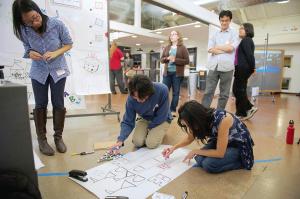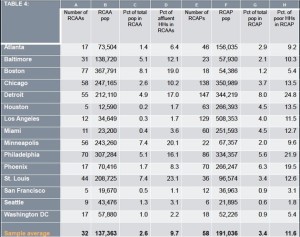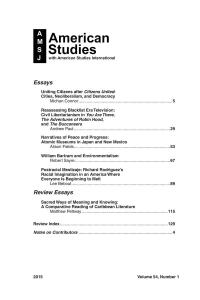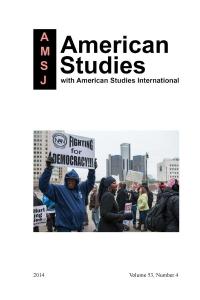I am going to leave the hot takes to the professionals, updating this post with links to content I find compelling. Will every perspective be represented? No. Do I endorse every finding? No. Do I think all of these are worth a read? Absolutely.
Many of my links emphasize the media’s (and the white-led political establishment’s (though that can include Black officials like Mayor Stephanie Rawlings-Blake, as Brittney Cooper notes)) enthusiasm for separating respectable and non-respectable modes of protest and being-in-public.
I should probably just start a fan site for Ta-nehisi Coates who so regularly pulls off the trick of developing deep and frequently historical analyses seemingly on the point of current events:
When nonviolence begins halfway through the war with the aggressor calling time out, it exposes itself as a ruse. When nonviolence is preached by the representatives of the state, while the state doles out heaps of violence to its citizens, it reveals itself to be a con.
Jeb Lund watched CNN so I didn’t have to:
This is an old trope, one in which the American media demands that any non-hegemonic group leaders — from any racial or gender or social minority — condemn the actions of any hammershit fool who does anything ugly while existing within their demographic. This is often the initial engagement of any minority, regarding any minority action, regardless of the merits of that minority action. Thank you for being on our show, and we’ll get to your concerns in a moment, but first, apologize and explain yourself. Like the old political line, “If you’re explaining, you’re losing.” By the time they’re done defending their mere existence, there’s no time left for their points. You can silence any problem by running out the clock.
But maybe this is all rather abstract, so let’s make fun of Wolf Blitzer.
Radical Faggot (his blog, his name, read his explanation) on the political utility of rioting:
The political goals of rioters in Baltimore are not unclear—just as they were not unclear when poor, Black people rioted in Ferguson last fall. When the free market, real estate, the elected government, the legal system have all shown you they are not going to protect you—in fact, that they are the sources of the greatest violence you face—then political action becomes about stopping the machine that is trying to kill you, even if only for a moment, getting the boot off your neck, even if it only allows you a second of air. This is exactly what blocking off streets, disrupting white consumerism, and destroying state property are designed to do.
On the media’s unwillingness to consider the role of police violence not only in the death of Freddie Gray, but in the eruption of violence during protest marches or everyday life:
Meghann Harris, a teacher at a nearby school, described on Facebook what happened:
Police were forcing busses to stop and unload all their passengers. Then, [Frederick Douglass High School] students, in huge herds, were trying to leave on various busses but couldn’t catch any because they were all shut down. No kids were yet around except about 20, who looked like they were waiting for police to do something. The cops, on the other hand, were in full riot gear, marching toward any small social clique of students…It looked as if there were hundreds of cops.
The kids were “standing around in groups of 3-4,” Harris said in a Facebook message to Mother Jones. “They weren’t doing anything. No rock throwing, nothing…The cops started marching toward groups of kids who were just milling about.”
It’s worth mentioning that if a category of alleged police abuse–driving unbelted suspects around sharp corners and through sudden stops in the back of a police wagon–has a name that is known among non-cops, and if that category of alleged police abuse has a name that dates it to the days when a roller coaster cost a nickel to ride, it’s most definitely a real thing.
Credit where it’s due, Conor Friedersdorf has taken an honest look from right-of-center and identified police lawlessness as a significant cause of Baltimore’s problems. I think he still confuses causes and effects, but I’ll credit any conservative condemnation of police lawlessness wherever I find it.
And, as the 50th Anniversary of the Watts uprising approaches (as well as the 50th of the Moynihan Report), we can reflect on what has changed and what has not.
Consider the cultural phenomenon of Toya Graham, the West Baltimore mother seen chasing and hitting her teenaged son, presumably to punish him for participating in a “riot.” Pace Moynihan, one thing that’s changed is that, so long as black teenagers are getting the shit disciplined out of them by somebody, mainstream opinion is satisfied. Stacey Patton disagrees:
This celebration of Graham reflects a belief that black youths are inherently problematic, criminal and out of control. The video also supports the idea that black fathers are absent, suggesting that all we need is an angry black mom to beat the “thug” out of an angry young man – and everything will be fine.
What is so disturbing is that white supremacy is let off the hook. A militarized and racist police force is not the problem. Systemic racism — from the War on Drugs to racial profiling, from hyper segregation to community divestment — is not the issue. The message becomes: Black children’s behavior is the true enemy of peace.
It gets a little more complicated, too, when Toya Graham starts speaking for herself, and refusing to play her assigned part in the morality play of Black Discipline (or to play it verbatim, anyhow), connecting her actions to her principal fear–that the police would kill her son:
We haven’t received any information about what happened to [Freddie Gray]. It seemed like he was harmed…We can’t talk to the police. The news keeps showing how he was dragged to the paddywagon…as a mother, that was just devastating to see.
Other commenters have noted the core hypocrisy: while denouncing “violence” (that is usually conflated with “property damage”) by Black Baltimoreans, the media have rushed to laud a woman who desperately used violence to protect her son from harm in order to promulgate an odious narrative that further justifies the violence of the state on Black youth. Goldie Taylor’s is particularly worth a read:
On the one hand, we lift up and celebrate the non-violent legacy of Dr. King. On the other, we want to know why aren’t there more mothers, like the one in the video, willing to beat their children into submission. Forgive me cable pundits, if I am not able to hear you talking out of both sides of your neck.
On the enduring nature of Two Americas, Gawker’s Collette Shade takes in the Hunt Cup in the County and experiences the deep engagement and empathy of Baltimore’s wealthy whites:
I stopped a boy in yellow shorts and a pastel plaid shirt and a girl in a white dress.
“Do you know about the protest?” I asked.
“It’s kind of stupid,” the boy in the yellow shorts said. “I think it’s a racial thing. Just because one African-American man died, they all team up. But we’re all the same.”
There’s plenty more, if you can stand it. I wonder if these white kids flagrantly breaking the liquor laws need someone like Toya Graham to start smacking them around. Would Rand Paul agree to that?
And The Onion kills it again:
BALTIMORE—Calling it an emergency measure designed to ensure public safety and order, Baltimore officials held a press conference Wednesday urging all residents to stay indoors until the natural evolution of social progress takes shape over the next century.
The funniest part of the joke is that that’s our actual policy for racial justice and reconciliation!
And, as a metropolitan historian I should say that I find Matt Weurker’s cartoon at Politico to be a gross oversimplification of multiple intersecting historical trends. But nah, it’s pretty much right on:
UPDATE:
Keeanga-Yamahtta Taylor writes in Jacobin on the confusion (deliberately sown, I would say) produced by the fact that the mayor of Baltimore and much of the city’s police leadership is indeed Black. It shouldn’t be necessary to write this, but racism is a social system of categorical disadvantage that is organized spatially and that works in part through actions taken to marginalize, police, repress, or render threatening particular (Black, young) bodies. If that seems to be a sweeping generalization, look at the praise heaped on Toya Graham. Her son’s body is the object of repression and fear, making her actions laudable within the system of racism. Point being, the presence of some, or even many, Black people in positions of leadership in Baltimore or in other cities does not cancel the presence of systemic racism, particularly as the political-economic forces of deindustrialization, casualization of labor, reentrenched racial and economic segregation, and corporate school reform reflect the political imperatives of austerity and mass incarceration. Taylor writes:
Today, we have more black elected officials in the United States than at any point in American history. Yet for the vast majority of black people, life has changed very little. Black elected officials have largely governed in the same way as their white counterparts, reflecting all of the racism, corruption, and policies favoring the wealthy seen throughout mainstream politics….
Black political operatives operate in the same terrain as their white competitors. They compete to stay in the good graces of wealthy donors while maximizing political connections to bolster their campaign war chests. They, too, rely on aggressive policing to make up for the social problems created when poverty, gutted social services, and no prospects for success in American society converge and eventually combust.
The uprising in Baltimore has crystalized the deepening political and class divide in black America. This is a new development in the black freedom struggle that historically has been united across class lines to fight racism.
Also worth checking out: this piece in the Guardian, in which geographer Ruthie Gilmore discusses the political economy of mass incarceration and urban austerity. Although I know Gilmore would be mildly horrified by the reporter’s implication that she’s an intellectual descendant of W.J. Wilson, it is a good distillation of her discussion of racism in terms of differential vulnerability to premature death.
And, while I am a huge fan of The Wire, Dave Zirin raises a couple of important critiques of the show that bear on whether the show’s fans get what’s going on in places like Baltimore.
I am now seeing what the The Wire was missing, despite its much lauded, painstaking verisimilitude: the voices of people organizing together for change. Everyone on The Wire seeks individual solutions for social problems: the lone cop, the lone criminal, the lone teacher, the lone newspaper reporter. Yes, it is certainly true that when entrenched bureaucracies battle individuals, individuals lose. But when bureaucracies battle social movements, the results can be quite different.
I think Zirin’s right here. One thing that David Simon nailed in the show was the way that the dysfunction of public and public-serving follows from a politics of austerity and disinvestment. But, perhaps because the series’s essential structure as a cop show demands individual narrative arcs, there are no social movements challenging those institutions to change.
Zirin also calls out Simon’s moralizing over the Freddie Gray protesters:
It’s always cringe-worthy when a wealthy middle-aged white guy lectures young black people about who they are and what they should do. In other words, if you had said two weeks ago—in the battle of prominent Baltimore Caucasians—that Orioles Manager Buck Showalter would represent himself better than David Simon, I think many would have been surprised.







